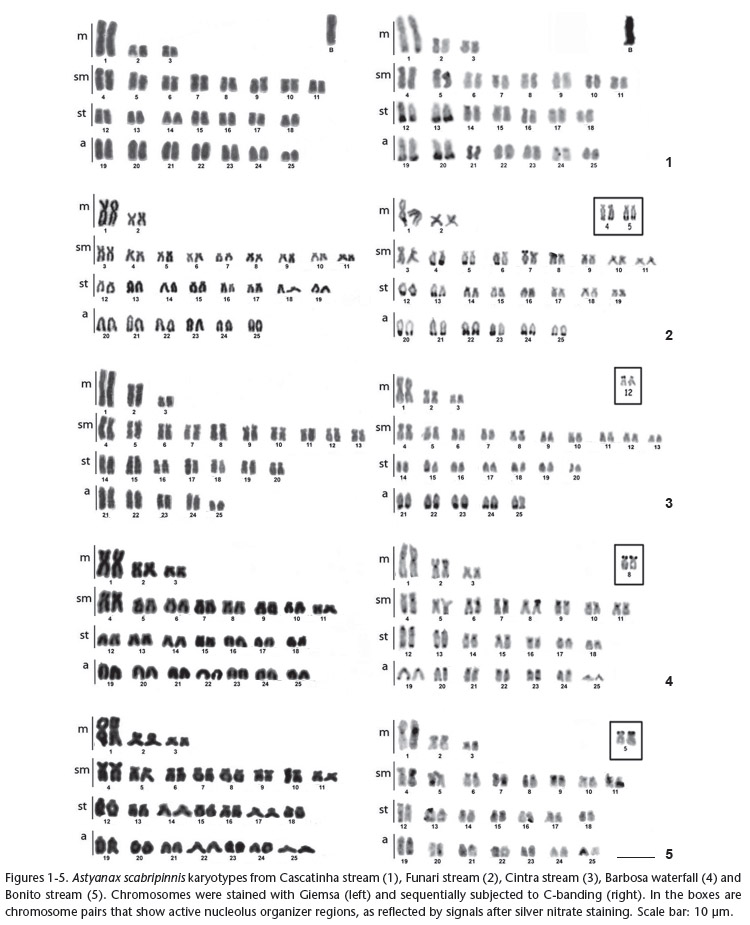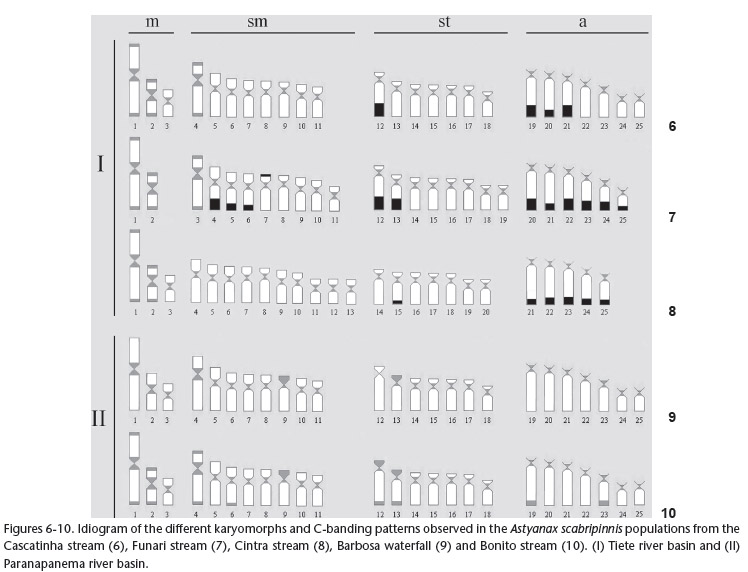Individual samples from five populations of the characid fish Astyanax scabripinnis (Jenyns, 1842) from the Tietê and Paranapanema river basins (Brazil) were studied. All individuals analyzed presented 50 chromosomes but three different karyotypic forms were observed. Additionally, some individuals of one karyomorph presented a macro supernumerary chromosome. No chromosomal differentiation was observed between males and females in any sample analyzed. C-banding revealed two distinct distribution patterns in these populations in which strong terminally located heterochromatic blocks were detected in the long arms of some chromosomes of the specimens from Cascatinha, Cintra, and Funari streams, whereas populations of the Capão Bonito stream and the Barbosa waterfall revealed less evident heterochromatic blocks on the chromosomes. The comparative study of the 18S rDNA localization by fluorescent in situ hybridization, and detection of active nucleolus organizing regions by silver stain (Ag-NORs) showed differences in rDNA content and expression of this gene site among the individuals analyzed. Chromosome mapping of the 5S rDNA revealed the presence of four sites located in two distinct chromosomal pairs, with no apparent differences among karyomorphs. Based on the biogeographical distribution and specific biological characteristics of the species, the data focus on the chromosome differentiation mechanisms involved in the speciation process acting on the populations of the Astyanax scabripinnis species complex.
Chromosome markers; karyoevolution; karyomorphs; nucleolus organizer region



